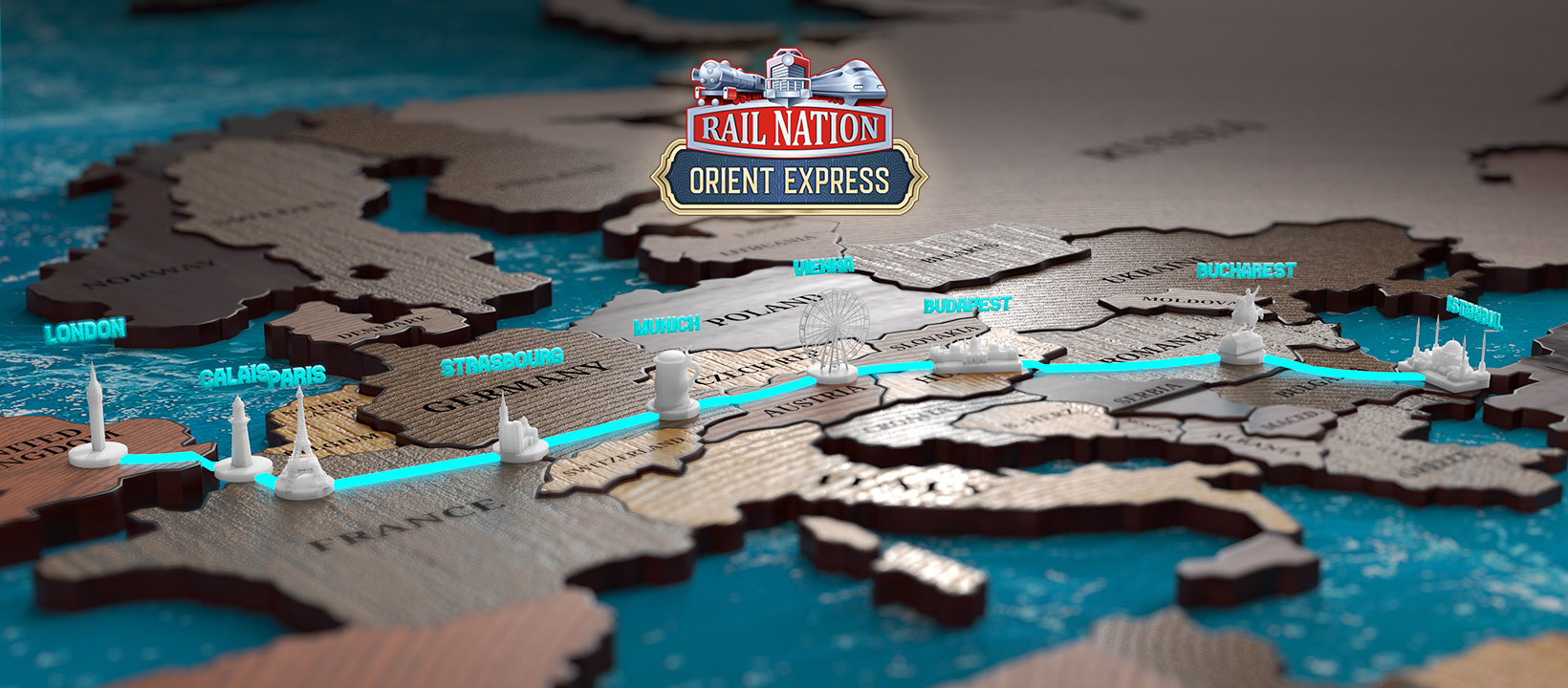
Before they are known to us in their most accepted form, in their most usual shape, creations often go down a path of many attempts, hesitations, re-dos and sometimes abandon. One could argue that masterpieces were a single first draft and that this is the characteristics they all share. Maybe. But no one could disagree that most inventions, recipes, habits, cultural traits, traditions, have been the long by-product of time, left unattended on the slow burner with many eras of different influence and attention. Until one day, when something made suddenly sense and appeared to us as “final”. It had, somehow, somewhen, happened.
Until it became the fancy and luxury railroad from Paris to Istanbul, known as such and without any plausible variant, the Orient Express began a gestation phase that lead it to change direction and destination quite a few times. We decided to highlight these different journeys that crossed different cities, hopped over different borders, different climates, weathers… while they all hoped to achieve the same thing: offering a convenient yet very high class mean to transport the high Western society to the first confines of the mysterious Orient.
Big Things Have Small Beginnings
When it first hit its tracks, the Orient Express came to life as “L’Express d’Orient” and connected Paris, France, to Vienna, Austria. The year was 1883. While it certainly is a magical trip, especially considering in 1883 both these cities are regularly contending for the first rank of the world’s cultural capital, it is nonetheless a rather “short” adventure: after the rolling vineyards of Alsace and the picturesque Bavarian Alps, the traveller is still quite far from getting his first taste of Orient.
Later that same year, the trip is extended to Romania. Now, a real adventure begins, as travellers are invited to step on a ferry to cross the Danube in Bulgaria, where they will sit in another train, headed this time to Varna on the shores of the Black Sea. They would finally reach Istanbul, however from the “backdoor of the Bosphorus”, as they would ferry their way from Varna to Constantinople (the name of Istanbul until the 1930’s).
It’s then in 1889 that the direct Paris – Constantinople trip became possible. It is, to this day, the most known and iconic version of the Orient Express.
War and (then) Peace
As we could imagine, the undefinable ordeal of the first world war halted all operations for the mythical train. It would have been somewhat “rocky” to continuously pass from one country to the next, while sitting in the same train and having to almost systematically switch sides of the trench with every border. After 1918, as the aftermath greatly accentuated the desire for R&R, easy going imageries and hobbies, fun and always more fun, a more “southern” experience was introduced, by diverting the historical Orient Express Route to Italy before forking to the Balkans via Trieste.
This rather appealing version throughout Adriatics has been known as the Simplon-Orient-Express, from the name of the “Simplon Tunnel” it goes thru in the Italian Alps. During its existence, it became the most used pathway from Paris to Constantinople.
Roaring Twenties, Disturbing Thirties, Appalling Forties
The twenties and thirties saw a real regain of enthusiasm and lead to yet another version of the Orient Express route: the Arlberg-Orient-Express. This time, bigger emphasis on the Swiss countryside, splitting Austria in full from left to right, Budapest, Belgrade and then… Not Istanbul, but Athens. It is unclear to this day why the decision to remain on the Western side of things was taken by the operator. Despite a noticeable effort on the “luxury” aspect of the trip, this version is the “shortest” to have been in use. Quite realistically, the real super high society of then, used to their own private jets trains and access to a portable court on rails with more amenities than the mind can conceive, publicly mocked the efforts of the Arlberg variant and participated in its decline: without the regular injection of blue blood and green money (or gold) into it, the journey that hesitated between its target audiences was bound to extinction.
No matter what, even if the wrong commercial decision that lead to its demise had been right, world war two would have seen to its end despite every judicious business decision behind it.
The Great Revival
Europe almost wiped itself from history (and geography) twice in a row, but apart from a few years of hiatus, this had zero effect on the Orient Express desire to exist. And zero effect indeed! Several routes operated by the Austrian ÖBB took place in the seventies and the early two-thousands, be it from Paris to Budapest, Paris to Vienna or Strasbourg to Vienna.
More recently, since a massive private investment in 2017, a renewal is accessible since 2022 to travel on the legendary tracks – after a severe wallet diet of round about 16.000 € per round trip ticket.
But clearly, the most vibrant demonstration that the Orient Express is still alive and well, still kicking the tracks, puffing its smoke from the Alsace vineyards to the Alp peaks and the shores of the Danube, choo-chooing its way from Eastern Europe to Anatolia, is under your very eyes, one single click away.
If you haven’t already, join one of the Rail Nation’s Orient Express servers that just started.